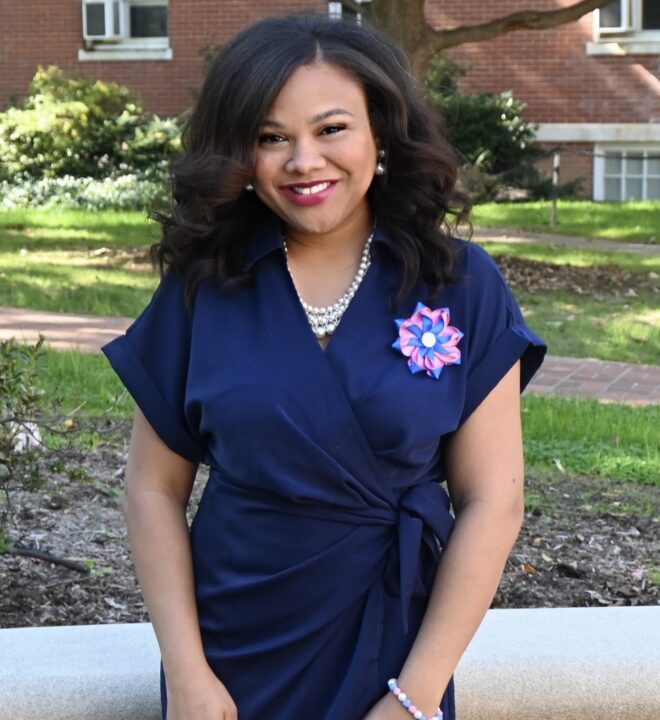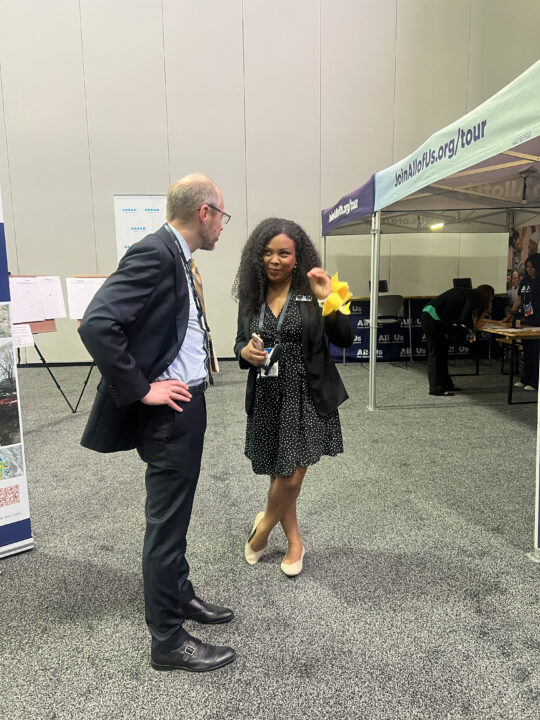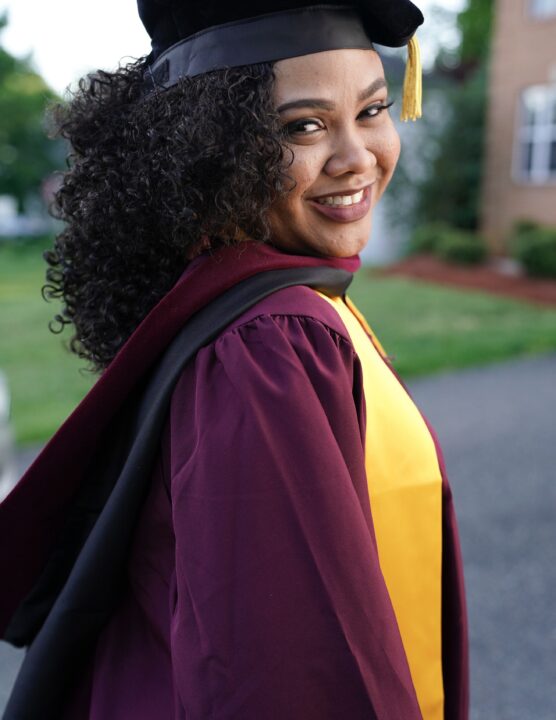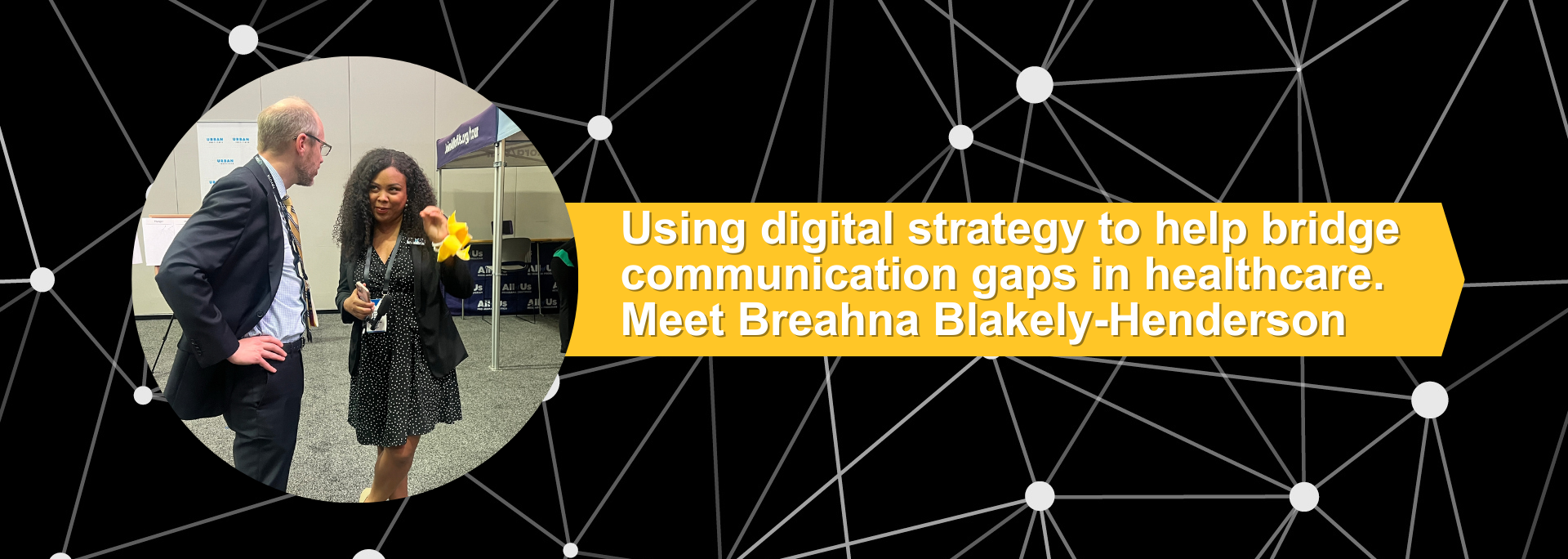Breahna Blakely-Henderson, who already held a PhD in healthcare administration, had been conducting biomedical research in molecular parasitology when she realized she could better serve the community by communicating the world of health care in ways audiences could better understand. The Walter Cronkite School of Journalism and Mass Communication proved the perfect place for her to learn how to connect the public to critical health information: Blakely-Henderson then pursued Cronkite’s online program getting her master’s degree in Digital Audience Strategy, and now works as a digital strategist for The National Institutes of Health.
Blakely-Henderson shared with us her unique path to the world of audience engagement, and how her time at Cronkite positioned her to succeed.
Note: The interview has been edited for clarity and brevity.



Question: As a digital strategist at NIH, what are your roles and responsibilities?
Blakely-Henderson: I am the social media strategist for The National Institutes of Health’s All of Us research program. Our goal is to enroll 1 million or more Americans in our study so that we can find out more about how DNA, lifestyle and environment affect people’s health outcomes.
As a social media strategist, I work as the lead of a team. Our focus is developing strategic messaging channels such as Facebook, Instagram, and X, and our CEO also has an X account that we manage.
Q: You studied biology and global public health before pursuing your Cronkite degree. Was the plan always to be a digital strategist?
A: No. I started in the biomedical research world, working in molecular parasitology. I have always been interested in health disparities and how to improve the quality of life in marginalized and underserved communities. But I was always looking at it from the standpoint of being a biomedical researcher, being in the lab, thinking of cutting-edge technologies and focusing on cutting-edge research.
However, as I got more into the biomedical research world, presenting at conferences, and being in the lab, one of the things that always stood out was that I had a gift for communicating and storytelling. I enjoyed the storytelling aspect of why the work we’re doing is important. I felt like being in the lab might not necessarily be my calling, but perhaps (it is) reaching audiences to tell the story and explain the science so that people understand the importance of the work that we do and the importance of spreading awareness about public health issues.
That’s when I started looking into how I could grow in that area, and I ended up finding the master’s program at ASU, and it seemed perfect for my interests.
Q: What made Cronkite the “perfect” place for you?
A: The master of the science program, digital audience strategy, was so hands-on in terms of actually us having to get multiple certificates, social media certificates, Google certificates, Google Display ads, different certificates from the Google Suite, and developing our skills in web, social media—the whole digital interface.
I think we learned a lot by doing and really throwing us into creating campaigns and running the analytics. [Faculty are] actually giving us real sites and clients to work with. That was one of our projects, actually working with a small business and analyzing their web presence. So I was able to translate all of that into my work with the National Institutes of Health, All of Us research program.
Q: What were your favorite parts of your Cronkite program?
A: All of my classes were so good, and I can think of a group project specifically where we had to develop a multi-part campaign for a company to the point of actually creating a commercial, a digital ad, a video, all of that. Working with a team on that—I really enjoyed that work.
Q: Since you’ve held three different positions at NIH, what’s your advice for students who want to work their way up in a company?
A: What worked for me was that people knew my passion for the work. When people know your passion for the work and you’re showing it, there is more excitement to promote someone that they know loves and appreciates the work that they do. So seeing my consistency, enthusiasm, follow-through and execution of hard work motivates others to want to continue to work with you and promote you.
Q: What makes digital strategy in the health field different?
A: The important thing is to dissect complex medical language and really be able to break down things in a way that audiences who may not have a medical background can understand. That takes a level of skill. Understanding the literacy level of your audience or the health care needs of your audience is one of the things that makes the health audience different—the complexity of the issues we are trying to explain.
Q: Having a bachelor’s, a master’s, a doctorate, and two certificates, how important is education after undergrad?
A: Because of technology, the communication field is ever-changing. We have to look at how people consume various new sources or various messages, also AI has influenced the way messages are presented, how people receive them or whether certain sources can be trusted.
I think because of that and because the communication and digital landscape is ever-evolving, that is what makes education more important because you have to consistently be able to keep up with and understand the landscape and trajectory of how communications are changing. I know for me, being in school and informed that way definitely helped me.
